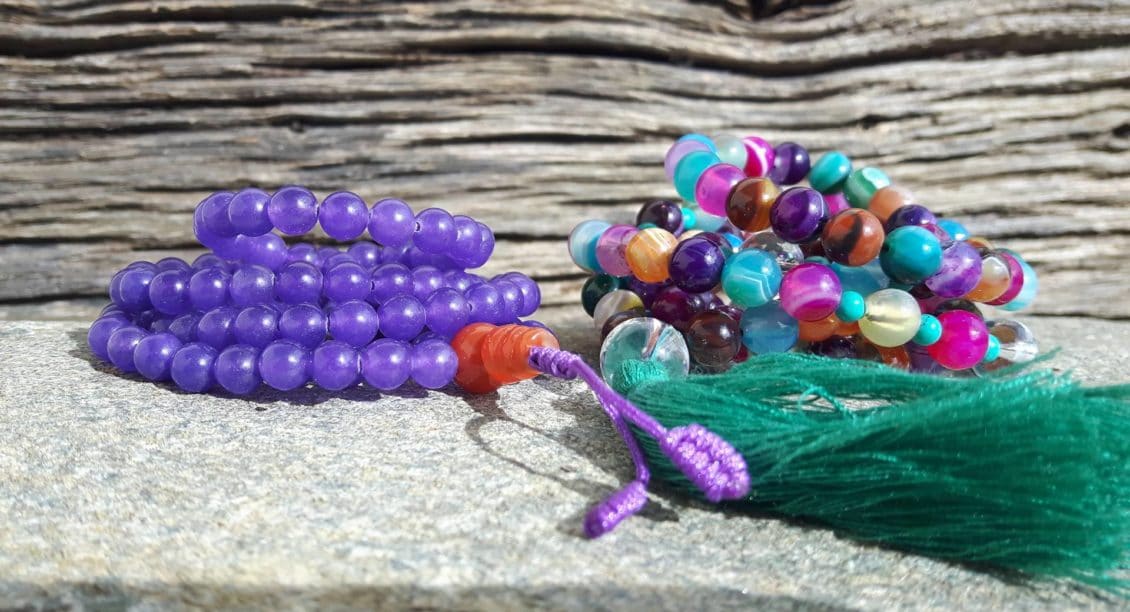Composed of semi-precious stones, seeds or wood, the mala necklace can be very precious or extremely simple. The mala is a medium of meditation for Buddhists and Hindus. It is used to count the number of mantras recited in a loop. Buddhists use sound, the vibration of the voice, to channel the mind and detach it from the physical world. The recitation of mantras, these "prayers", is intended to bring calm and to direct the mind towards meditation.
Buddhists all over the world graze this rosary at various times of the day; and when not in use, wear it around the neck. A mala always stands with the left hand. It is degraded by pulling the grains toward you, symbolizing that one draws the beings out of the suffering and that one accumulates positive Karma during the practice.
Origins of the mala necklace
The term "Mala" is a word in Sanskrit (language of Hindu and Buddhist religious texts) which means “meditation garland”. Originally, malas were mostly used for a special style of meditation called “Japa” which means “to recite”. This is why malas are sometimes called japa mala.
How to choose the right size ?
When buying a mala on the internet it is difficult to realize the differences in size. The length of a mala necklace will be very different if the beads are 8mm or 6mm.
The length of a classic mala, with 108 beads of 8 mm will be about 50 cm, or 1 meter rolled. The length of a pearl mala 6 mm is about 35 cm, or 70 cm unwrapped.
The big differences between a mala multi-tower or mala necklace
The multi-tower malas that are worn on the wrist are elastic malas. This requires the mala to be very light. Multi-turn malas are usually composed of 6 mm beads or light seeds. Mala necklaces are made of 8 mm, 9 mm, or larger, threaded on thick and strong thread. It is often impossible to wear a traditional mala necklace in multi-turn wrist because the length rarely matches.
Why 108 pearls?
There are several reasons or concepts for the number of 108 pearls:
- 108 feelings: according to Buddhists, there are 108 feelings. 36 in connection with the past, 36 in connection with the present and 36 in connection with the future.
- Buddha has 108 names. In Hinduism, some gods also have 108 names.
- Buddha had to undergo 108 trials to attain enlightenment.
- According to Buddhism, there are 108 spiritual sufferings (kleshas).
- In yoga or tai chi, there would be 108 positions or movements.
- The Upanishads, this set of sacred and philosophical texts forming the theoretical basis of the Hindu religion, are 108.
- Numbers 1, 0 and 8: In Hinduism, 1 represents god, 0 means emptiness and humility found in spiritual practice and 8 symbolizes the infinite.
- In Buddhism, there are 108 sins to avoid, and 108 virtues to cultivate.
Cultural wink
For Christians, the rosary is an instrument of prayer. It is composed of 53 grains, 5 series of 10 prayers and 5 various prayer grains.
Among Muslims, the rosary or tasbih is used to recite the repetition including the names of Allah's names and the glorification of God after prayers. He stands with his right hand.





